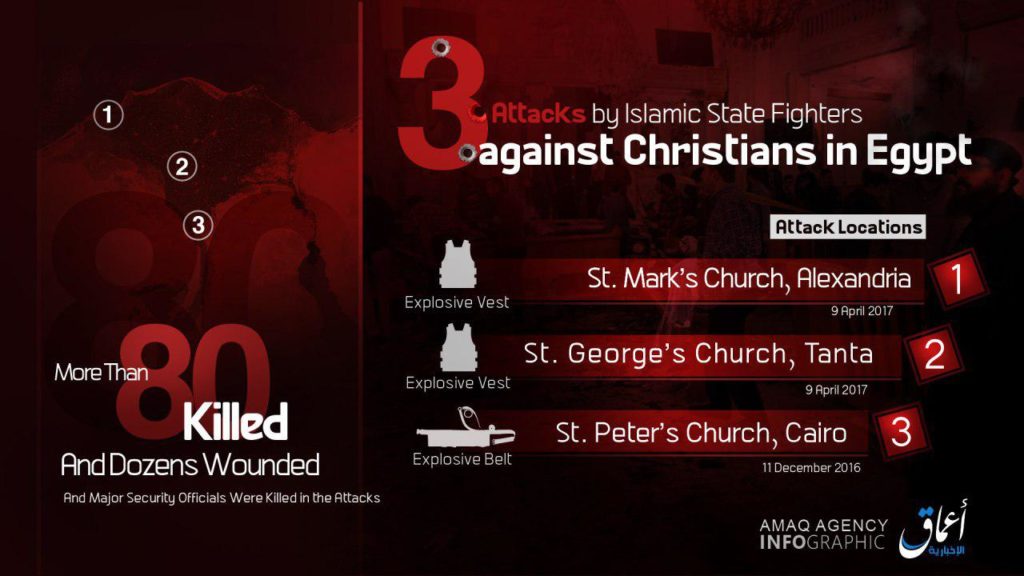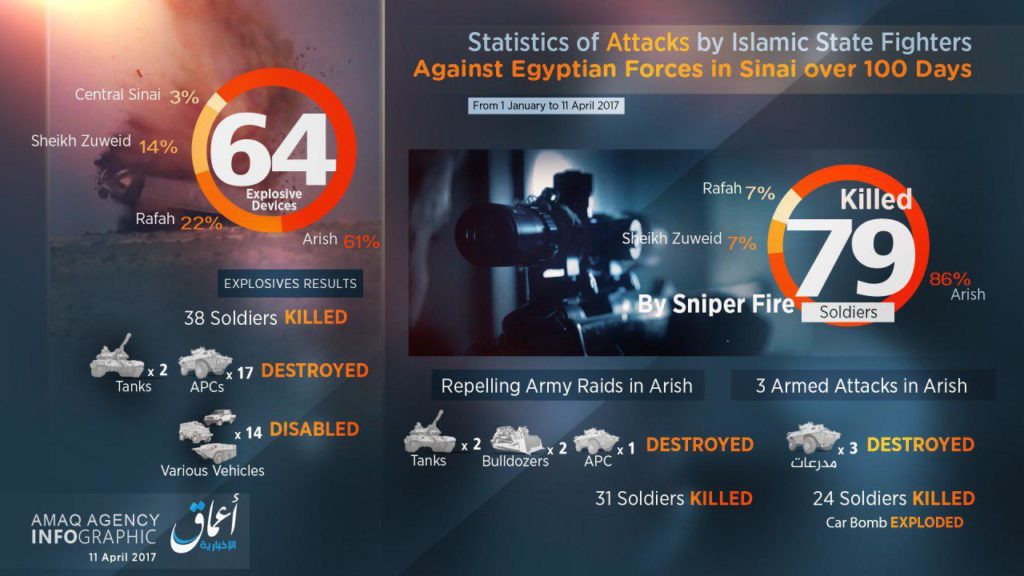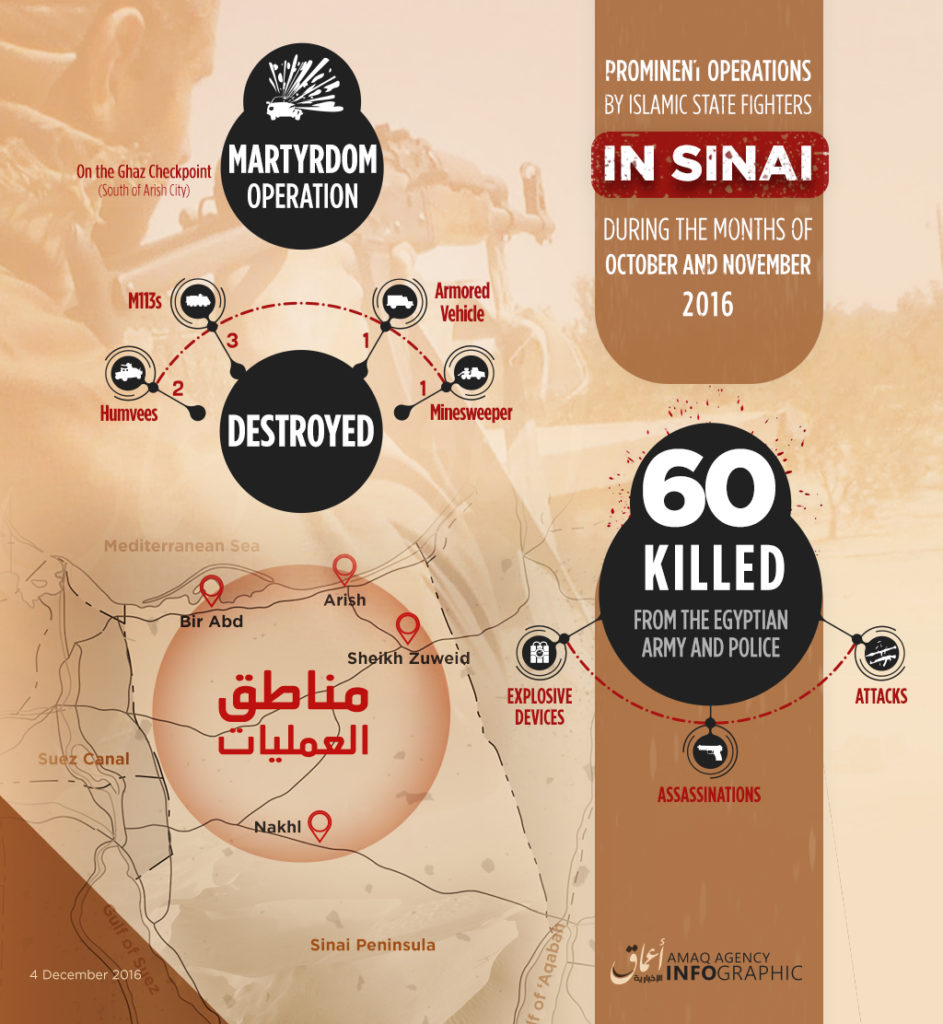
Islamic State fighters attacked and killed at least one Egyptian policeman and wounded several others at a security checkpoint near Saint Catherine’s Monastery in the southern Sinai late yesterday. Amaq News Agency, one of the group’s main propaganda arms, quickly claimed responsibility for the shooting in a message released online. The Arabic statement can be seen above.
The Egyptian interior ministry confirmed that a police officer was killed, adding that the jihadists were forced to flee after their ambush. The Islamic State’s men reportedly left behind a machine gun.
Saint Catherine’s has been designated a world heritage site by UNESCO.
“The Orthodox Monastery of St Catherine stands at the foot of Mount Horeb where, the Old Testament records, Moses received the Tablets of the Law,” UNESCO’s web page for the historical area reads. “The mountain is known and revered by Muslims as Jebel Musa” and “is sacred to three world religions: Christianity, Islam, and Judaism.” The Monastery dates to the 6th century, houses various antiquities, and “is the oldest Christian monastery still in use for its initial function.”
The Islamic State’s hit-and-run raid near the monastery comes just over one week after the organization’s Egyptian arm bombed two Coptic churches in Tanta and Alexandria on Palm Sunday. More than 40 people were killed and dozens more wounded in the twin bombings. [See FDD’s Long War Journal report, Islamic State claims church bombings in Egypt.] The group also bombed a Coptic church in Cairo last December.
The so-called caliphate’s propaganda machine has been heavily promoting its operations in Egypt since the church bombings earlier this month. Two infographics produced by Amaq during the month of April can be seen below. Both were posted online in Arabic and English. Only the English-language versions are included in this article. The first infographic promotes the three attacks on Coptic churches in the heart of Egypt mentioned above.
The second purports to summarize the jihadists’ insurgency in the Sinai. Amaq claims that the Islamic State’s men have killed dozens of Egyptian soldiers with sniper fire, explosive devices, and other armed attacks during the 100-day period between Jan. 1 and Apr. 11 of this year. In addition, 41 Egyptian military vehicles, including 21 armored personnel carriers and four tanks, were allegedly destroyed. The overwhelming majority of these claimed operations have been carried out in the northern Sinai, especially in Arish, Sheikh Zuweid and Rafah.
Amaq’s statistics cannot be independently verified, but the scope of the fighting is generally consistent with what is known from independent sources.
The Islamic State’s Sinai “province” (Wilayah Sinai) launched a complex assault on Egyptian security forces in the northern part of the peninsula in June 2015. Suicide bombers and dozens of fighters struck government loyalists in Arish and Sheikh Zuweid. It was the jihadists’ largest sustained offensive on the Egyptian government in some time.
Abu Bakr al Baghdadi’s fighters have carried out scores of raids, bombings and other operations in the Sinai in months since. Some of these have explicitly targeted Christians. On June 30, 2016, for instance, Amaq reported that Islamic State “fighters” had “assassinate[d] the priest of the Saint George church in the city of Arish due to him waging war against Islam.” The Coptic Orthodox Church confirmed that the priest was shot dead as he was making his way home after performing mass.
In recent weeks, the Sinai “province” has advertised its nascent governance efforts. One video (“The Light of Sharia”), which was promoted in March, contained various scenes of the jihadists enforcing their medieval legal code. The video also threatened Egyptian Copts and blasted the Muslim Brotherhood for supposedly abandoning true Islamic principles during its brief time in power. Another production released online days later documented the group’s “security work,” including the gruesome beheadings of accused spies and other foes.
Still another video promoted by the caliphate’s Sinai branch in recent days (“Bolts into the Hearts”) offered viewers various scenes of snipers targeting security personnel. As with Islamic State media produced in Iraq, Syria and elsewhere, the video dramatizes the snipers’ abilities by including images that appear to have been recorded through rifle scopes.
The ambush near Saint Catherine’s is potentially significant because it occurred in the southern part of the Sinai, an area where the jihadists have carried out only sporadic attacks. The major exception to this pattern was the Oct. 31, 2015 bombing of a Russian airliner, killing all 224 passengers and crew on board. The bomb was most likely placed on board the aircraft at the Sharm El Sheikh International Airport, which is located on the southern tip of the Sinai Peninsula.
The Islamic State’s Wilayah Sinai was established in Nov. 2014, after much of Ansar Bayt al Maqdis (ABM), an al Qaeda-affiliated group, defected to Baghdadi’s cause. ABM’s decision to join the Islamic State was one of the self-declared caliphate’s most significant gains in its rivalry with al Qaeda. The Sinai “province” has been a prolific source of terrorism and other violence ever since. It has been waging a low-grade insurgency against the Egyptian state for more than two years.
Infographics produced by Amaq News Agency during the month of April:


A similar infographic produced by Amaq last year:









1 Comment
Great analysis. Certainly seems to justify Sisi’s State of Emergency.
Too bad our two largest Islamic allies, Turkey and Egypt, are going down the tubes, sliding backwards into authoritarianism.
Wherever there’s a problem in the world, I look first for Islamist forces causing it. Whether in power or as insurgents, no one does crazy better.